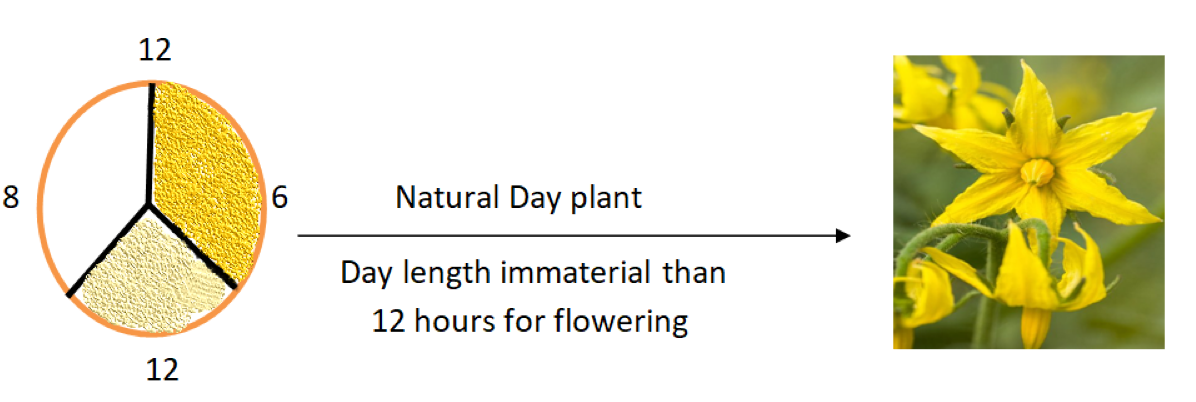
The day-neutral plant is
(a)Tobacco
(b)Tomato
(c)Wheat
(d)Oat
Answer
575.1k+ views
Hint: The mechanism of the flowering of plants depends upon the requirement and availability of light. In many flowering plants, a photoreceptor protein is used. This protein may be phytochrome or cryptochrome. These are used to sense seasonal changes like duration of night (nights are shorter in summer and longer in winters)
Complete answer:
Day-neutral plants: The plants which are not affected by either short or long duration of light are called day-neutral plants. These plants flower after a period of vegetative growth. These plants do not depend upon the daylight hours for their flowering. E.g. sunflower and tomato.

Additional Information: On the bases of the photoperiodic plants that can further be divided into obligate photoperiodic plants and facultative photoperiodic plants, obligate photoperiodic plants require a long or a short duration of the night before flowering. Facultative photoperiodic plants are bound to flower regardless of the length of the nights but are more likely to flower when the light is just right.
-Short day plants: These plants require short periods of light to flower. E.g. rice, tobacco, cotton.
-Long day plants: these plants require a long duration of exposure to light. E.g. lettuce, spinach, potato.
So, the correct answer is, ‘Tomato’
Note: Biologists believe that the proteins phytochrome and cryptochrome which are created by light during the daytime may be related to the circadian rhythm of the plants. Photoperiodism affects not only flowering but also the growth of stems, growth of roots, and seasonal loss of leaves.
Complete answer:
Day-neutral plants: The plants which are not affected by either short or long duration of light are called day-neutral plants. These plants flower after a period of vegetative growth. These plants do not depend upon the daylight hours for their flowering. E.g. sunflower and tomato.

Additional Information: On the bases of the photoperiodic plants that can further be divided into obligate photoperiodic plants and facultative photoperiodic plants, obligate photoperiodic plants require a long or a short duration of the night before flowering. Facultative photoperiodic plants are bound to flower regardless of the length of the nights but are more likely to flower when the light is just right.
-Short day plants: These plants require short periods of light to flower. E.g. rice, tobacco, cotton.
-Long day plants: these plants require a long duration of exposure to light. E.g. lettuce, spinach, potato.
So, the correct answer is, ‘Tomato’
Note: Biologists believe that the proteins phytochrome and cryptochrome which are created by light during the daytime may be related to the circadian rhythm of the plants. Photoperiodism affects not only flowering but also the growth of stems, growth of roots, and seasonal loss of leaves.
Recently Updated Pages
The number of solutions in x in 02pi for which sqrt class 12 maths CBSE

Write any two methods of preparation of phenol Give class 12 chemistry CBSE

Differentiate between action potential and resting class 12 biology CBSE

Two plane mirrors arranged at right angles to each class 12 physics CBSE

Which of the following molecules is are chiral A I class 12 chemistry CBSE

Name different types of neurons and give one function class 12 biology CBSE

Trending doubts
One Metric ton is equal to kg A 10000 B 1000 C 100 class 11 physics CBSE

What is 1s 2s 2p 3s 3p class 11 chemistry CBSE

Discuss the various forms of bacteria class 11 biology CBSE

State the laws of reflection of light

Explain zero factorial class 11 maths CBSE

An example of chemosynthetic bacteria is A E coli B class 11 biology CBSE




